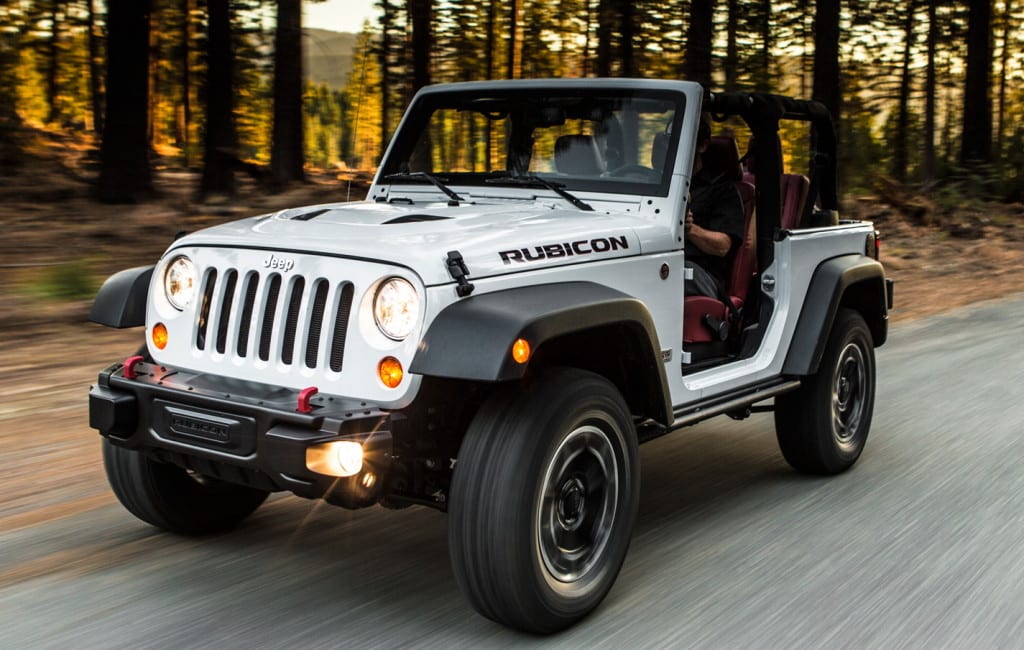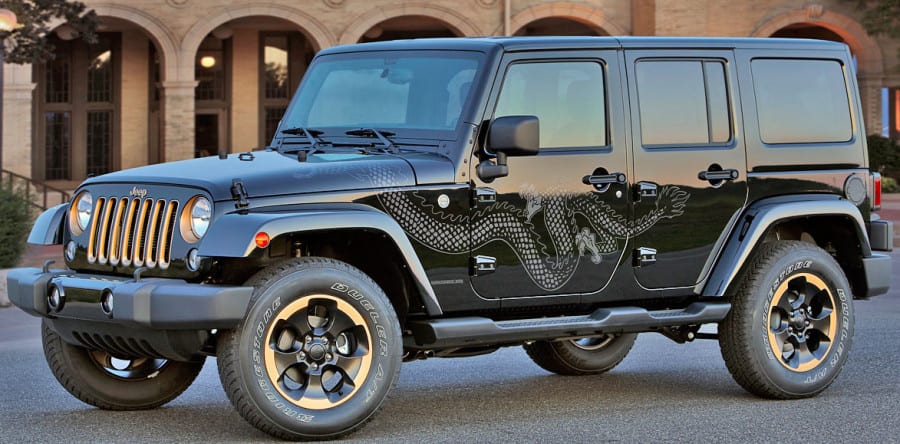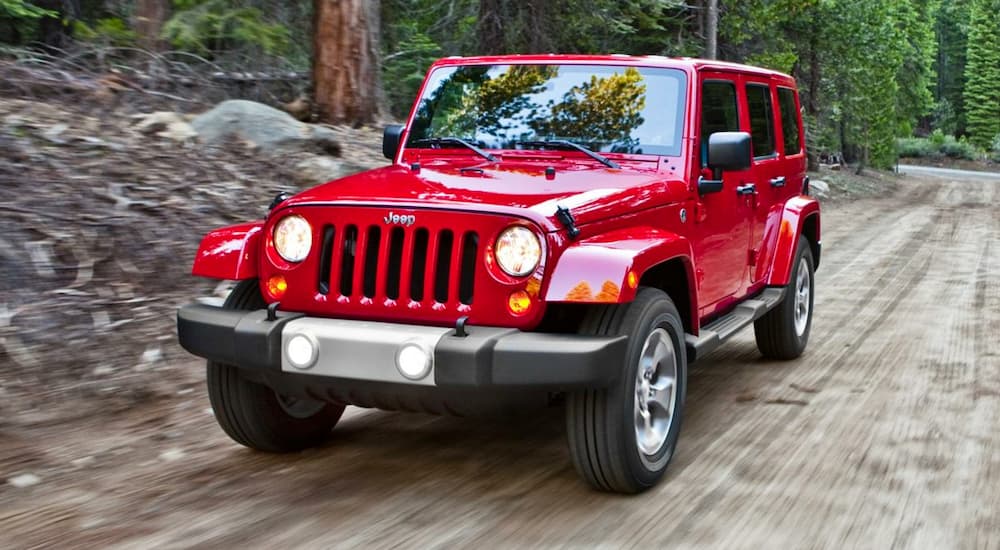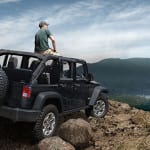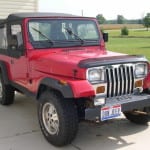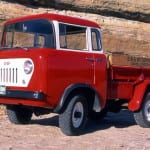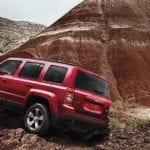Buying a car is no small matter. For many of us, this will be one of the biggest purchases we undertake, and will likely involve a several-year investment in a vehicle you will not actually own until it is fully paid off and, unfortunately, it won’t be worth as much as you’ve paid by then.
You may have noticed that used Jeep Wranglers, even those only a few years old, lose value as they age, even if they aren’t heavily used in that time. That drop in price is due to depreciation, the natural loss of value that plagues all vehicles the minute they first leave the lot.
Fortunately, not all vehicles depreciate at the same rate – everything depends on the vehicle’s ability to hold up over time and its reputation among car sellers as a used model. Jeep vehicles, for instance, tend to hold their value better than most other brands over the long term. Here’s a look at the mechanics of depreciation, and why Jeeps seem to be immune to its worst effects.
What Is Depreciation?
Generally, depreciation refers to the value a car loses as it ages. This means that as each year passes after a car is first built it will devalue by several thousand miles – even if it is never driven one mile. This all has to do with public opinion and the availability of newer, better, more expensive models available each year that make your car worth comparatively less.
A new car is expected to lose between 15 to 25 percent of its value each year for the first five years after it is first built. That means that if you buy a car worth $20,000 in year one, you should expect it to be worth only about $6,500 by the end of year five on average.
The worst hit from depreciation actually happens in the very first year, even beginning the moment your new vehicle leaves the lot. On average, you should expect to see about ten percent of the value of your vehicle disappear as soon as it leaves the dealership from which it came – and another ten to 20 percent by the end of the year. From here the rate of depreciation will begin to decrease, but the damage has certainly already been done.
What Makes A Car Lose Value?
There are several factors that can contribute to a vehicle’s depreciation, not the least of which being the amount of wear and tear the vehicle has experienced. If your used vehicle has over a hundred thousand miles or is over a decade old, it probably isn’t worth much compared to its original purchase price. That’s because the next buyer will be less secure of the amount of life left in the vehicle, and will likely be unwilling to spend too much on a vehicle that might not work in a year or so.
Another notorious contributor to depreciation is visible damage to the vehicle or a lengthy service record, which will only serve to scare off a potential buyer if the vehicle looks older than it really is. By contrast, keeping your vehicle looking like new will help boost its appeal to a buyer.
Why Do Jeeps Depreciate Slower Than Most?
In the world of depreciation, reputation matters just about as much as proven reliability.
Take Jeeps for instance, which have long been known to hold onto their value better than most of its competitors. Jeep has been able to hold this prestigious reputation because of its proven ability to build vehicles that can withstand the test of time.
Everybody knows that Jeeps are among the toughest vehicles out there. Able to take on the most intense off-roading trails, Jeeps have been relied on to get humans over difficult terrain since the early days in the Army, when military personal relied on the Jeep as a critical tool for warfare. Now used to conquer the raw force of nature by enthusiasts and professionals alike, the Jeep has long been respected as a tough mudder with unparalleled performance where it counts.
That’s why it’s so amazing that Jeep has maintained it’s other most notorious claim to fame: as the vehicles that simply won’t quit, even when the odometer reads up to six digits. Given what te average Jeep is put through, the fact that they can last and last and last as long as they do is simply incredible – and the auto world knows it full well. That’s why Jeeps don’t depreciate as quickly as other cars – buyers and sellers worldwide know that a used Jeep still maintains plenty of power and likely has a lot of life left in it, and so is still worth quite a bit even years down the road.
Of course, since no vehicle is fully immune to depreciation, however, Jeep owners know that it takes a steady, guiding hand to bring a quality vehicle through the years and end up retaining a decent value on the other side.
How To Prevent The Worst Of Depreciation
Fortunately for us, there are a few steps a careful car owner can take to mitigate the worst damage done by depreciation. With a little love and care, you can preserve some of your vehicle’s value without sacrificing all the fun and adventure that inspired you to buy your Jeep in the first place.
The first step – and probably most painful – is to simply put as few miles on your car as possible. The higher your odometer reading the less your car will be worth when you try to sell it. This can be a serious pain to those who love their new car and want to go out and take it for a spin, but that doesn’t mean it won’t matter at resale. Not to say you shouldn’t enjoy your ew vehicle just keep depreciation in mind as you gear up for those cross-country road trips.
Second, and a favorite among Jeepers, is to add on to your car in ways that will add value to combat depreciation. Jeep owners are notorious for outfitting their vehicles with modifications and upgrades to improve performance and driveability. As a benefit, this tends to give a healthy boost to resale value later on down the road, as the cost of installation for some parts can be high and consumers in the market for upgraded Jeeps will likely pay more for a model with some mods already installed. Adding features won’t reverse the effects of depreciation, but it can make a serious dent in the loss you will encounter.
Finally, it’s best to keep an accurate maintenance log to be able to prove that your car has been well cared for since its original purchase. Having a record to prove things like regular oil changes, tire rotations or replacements, fluid changes, engine maintenance, brake replacement, and more can help establish a pattern of good maintenance that can speak volumes for your vehicle’s expected longevity. A smart buyer will look for this information and, if you have it ready and available, will likely be willing to pay more for the peace of mind.
Depreciation is not something to be taken lightly, no matter what kind of vehicle you have. Every vehicle will naturally lose value with age, and so its best to bid this into your financial calculations and do what you can to mitigate the worst of the damage. By following these simple steps you too could recover a good amount of resale value and say goodbye to your used Jeep with a smile on your face – and cash in your wallet.
Update: 6/12/2019
Above we had alluded to how quickly an average vehicle can depreciate. Having been a few years since this piece was originally written, let’s revisit that conversation, while updating it with some fresh numbers, circa 2019 (you’re welcome).
But first, let’s journey back to a simpler time; a time that we like to call ‘2013’ and pretend that a Wrangler experienced depreciation at the average rate (experienced by most vehicles). Emphasis, of course, on the word ‘pretend’.
Back in 2013, a brand new Rubicon 10th Anniversary Wrangler might have been priced to start around $30,695 based on its configuration. At the risk of revisiting certain points already mentioned, that Wrangler would have decreased in value by about 11% before its rear tires even left the dealership. This means that it could be worth just over $27,000 if that new owner had attempted to turn right back around and re-sell it!
Of course, there are both governing laws and protective policies that prevent such things from happening, but depreciation happens that fast. After a year of ownership, that Jeep might have only been worth about 75% of its original value. At the three year mark, it will have decreased by as much as 46%, placing its value at just below $17,000. Five years after the initial purchase brings us nearly up to the present, and a point when it will have lost up to 63% of its value! That means that brand new Rubicon from a few years ago, might only be worth around $11,000.
Fortunately, most Jeeps depreciate at a slower rate than other vehicles, and these numbers get thrown out the window, since they’re not really applicable. So, let’s put that difference into context. A quick search of Kelly Blue Book listings for a used 2013 Jeep Wrangler Unlimited Rubicon 10th Anniversary with approximately 67,000 miles on it shows us that its fair market price falls in between the $25,955 – $29,648 range. An impressive difference, for sure!
And while these numbers are purely speculative, with actual valuation to depend based on the Wrangler’s starting price point, configuration, inclusion of mods, actual mileage, and wear & tear, it’s clear to see just how significant the difference in depreciation can be for a Jeep.
But Why?
In October 2013, a study performed by iSeeCars determined that – out of 4.3 million vehicles – the Jeep Wrangler Unlimited and Jeep Wrangler displayed the two lowest depreciation rates of any vehicle five years after the initial sale. To quote the study, “Jeep earned the top two spots on the list, with the four-door Jeep Wrangler Unlimited having the lowest five-year depreciation followed by its two-door counterpart, the Jeep Wrangler, by a fraction of a percentage point. Jeeps are known for retaining their value due to their enduring popularity, as their durability and performance across all terrains.”
Above, we had discussed this – explaining that the durability and resilience of a Wrangler empowers it to tackle terrain that might prove damaging to any other vehicle. With the reduced threat of wear and tear, a casually driven Jeep will inevitably retain its reliability longer than others that might be less-equipped.
And while we had addressed the value of minimizing the overall mileage driven, let’s be honest, one doesn’t buy an open-air vehicle like a Wrangler with the intention of ‘not driving it.’ Thus, the importance of thoughtful vehicle maintenance becomes more important than ever. The probability of both higher mileage and (regardless of its resilience) the kind of wear and tear you’d expect on a Jeep necessitate careful care. Most every Jeep enthusiast understands this, which only serves to create a stronger bond between them and their machine. The fact that it also encourages them to modify the vehicle with value-added, performance parts only serves to increase its ability to resist depreciation.
Most Popular Mods (That Add Value)
There’s probably a joke that goes something like this, “If you don’t mod your Jeep, is it even a Jeep?” The simple truth is that the enthusiast community, be they rock or mall-crawlers, there’s a lot less credibility if you’ve simply driven a stock Wrangler off a dealers lot without any plans to make personalized changes to it. And, as mentioned, most of these changes add value.
But what if you’re relatively new to the Jeep community and want to make such value-added changes? Which mods should rank at the top of your list?
Lift Kit – whether intended to increase ground clearance and improve suitability for off-roading, to create a more aggressive aesthetic or to accomplish all of the above in one fell swoop, an upgraded suspension ranks among the primary mods first sought out. Of course, you get what you pay for, so it’s important that you know the difference between a quality kit and one that wants that includes little more than shocks, sprints, and spacers. This is the only way that your lift kit will work properly with the Jeep’s OEM suspension components. Failing to recognize this will immediately affect drive quality and could lead to costly issues down the line. Just be sure to understand any restrictions that might apply to lifts in your state.
Tires – With a lift, your options in terms of tires has increased exponentially. As such you might be inclined to add some additional height or tailor your selection to reflect specific performance attributes needed to get what you need out of your jeep. But while it’s easy to go all out with performance mud tires, be sure to explore quality all-terrain offerings if you plan to use the Jeep in casual driving as well. This will ensure an extended life for the tread, can reduce road noise and provide comparatively better fuel economy.
Sidesteps & Protective Elements – What have we been talking about? Getting that truck higher, right? Well, choosing the right set of sidesteps, running boards, nerf bars or rails are going to be necessary in order to help some people climb up into the Jeep of yours. But that’s just part of their functional value. While not all products are created equal, many high-quality offerings are designed to provide added production to the Jeep’s side and underbelly as well. These go hand-in-hand with other protective elements like skid plates, front-end brush guards, light guards, and specialty bumpers; not only adding value but helping to retain it by minimizing the risk of damage. And last (well, on this short list) and hardly the least.
The Winch – In fact, let’s be honest, this really should have been first on the list. After all, you throw a lift, tires and skid plates on a Jeep and a fool might think they’re ready for off-roading. Well, that decision seems pretty foolish if you don’t have a means of pulling your Jeep out of the inevitable bind you’re likely to find yourself in. Enter the winch, the only way to ensure that the Jeep you’ve already spent a lot of money is actually coming home with you at the end of your excursion.
So There You Have It
A better understanding of why Jeeps depreciate slower than other vehicles, and an appreciation for how you can add further value to a Jeep in the event that you decide that you want to part ways with it. Protect your investment with smart choices, and it’s bound to be a winner from the first day, to the last.
